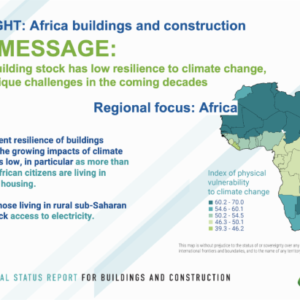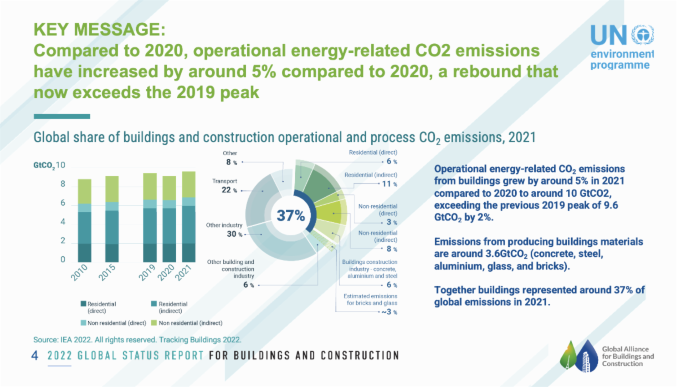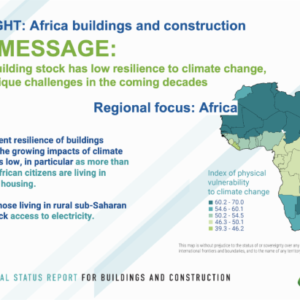In 2021, investments in building energy efficiency increased by 16% to
USD 237 billion, but growth in floor space outpaced efficiency efforts
The sector’s 2021 operational energy-related CO2 emissions were up 5 per cent over 2020 and 2 per cent over the pre-pandemic peak in 2019
Despite an increase in energy efficiency investment and lower energy intensity, the building and construction sector’s energy consumption and CO2 emissions have rebounded from the COVID-19 pandemic to an all-time high, a new report finds.
Released at the latest round of climate talks in Egypt, COP27, the 2022 Global Status Report for Buildings and Construction finds that the sector accounted for over 34 per cent of energy demand and around 37 per cent of energy and process-related CO2 emissions in 2021.
The sector’s operational energy-related CO2 emissions reached ten gigatonnes of CO2 equivalent – five per cent over 2020 levels and two per cent over the pre-pandemic peak in 2019. In 2021, operational energy demand for heating, cooling, lighting and equipment in buildings increased by around four per cent from 2020 and three per cent from 2019.
This, according to the report from the Global Alliance for Buildings and Construction (GlobalABC), means that the gap between the climate performance of the sector and the 2050 decarbonization pathway is widening.
“Years of warnings about the impacts of climate change have become a reality,” said Inger Andersen, Executive Director of the United Nations Environment Programme (UNEP). “If we do not rapidly cut emissions in line with the Paris Agreement, we will be in deeper trouble.”
“The buildings sector represents 40 per cent of Europe’s energy demand, 80 per cent of it from fossil fuels. This makes the sector an area for immediate action, investment, and policies to promote short and long-term energy security”
Decarbonizing the buildings sector by 2050 is critical to delivering these cuts. To reduce overall emissions, the sector must improve building energy performance, decrease building materials’ carbon footprint, multiply policy commitments alongside action and increase investment in energy efficiency.
Energy intensity in kilowatts per hour per square metre slightly decreased, from 153 in 2015 to 152 in 2021.
Investments in building energy efficiency have gone up by unprecedented levels, rising by 16 per cent in 2021 over 2020 levels to USD 237 billion.
However, growth is outpacing efforts on energy efficiency and reducing energy intensity.
The increase in global gross floor area between 2015 and 2021 is the equivalent to the total land area covered in buildings in Germany, France, Italy and Netherlands; if it were built on one level, at around 24,000 sq. km.
The report says that investments in energy efficiency must be sustained in the face of growing crises – such as the war in Ukraine and the ensuing energy crisis, and the cost-of-living crisis – to reduce energy demand, avoiding CO2 emissions and dampen energy cost volatility. The buildings sector represents 40 per cent of Europe’s energy demand, 80 per cent of it from fossil fuels. This makes the sector an area for immediate action, investment and policies to promote short and long-term energy security.
The report shows that the sector can still change. For example, rising fossil fuel costs due to the war in Ukraine and the cost-of-living crisis are providing incentives to invest in energy efficiency – although the erosion of purchasing power and the impact of labour and materials may slow investment. “The solution may lie in governments directing relief towards low and zero-carbon building investment activities through financial and non-financial incentives,” continued Andersen.
Also critical to reducing the sector’s emissions are including buildings in climate pledges under the Paris Agreement – known as Nationally Determined Contributions (NDCs) – and mandatory building energy codes.
The number of NDCs that mention buildings grew from 88 in 2015 to 158 in 2021. However, progress on buildings and construction policies and action remains slow. Over the same period, the number of countries with building energy codes rose from 62 to 79. However, only 26 per cent of countries have mandatory building energy codes for the entire sector.
A focus on Africa and building materials

|


